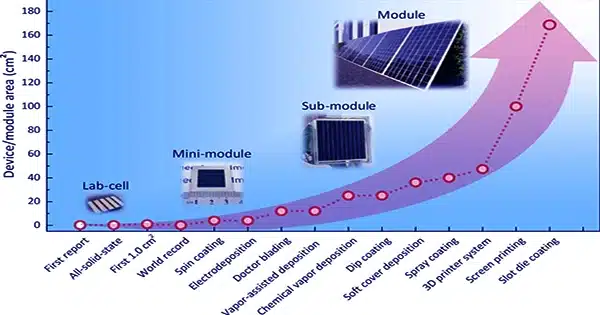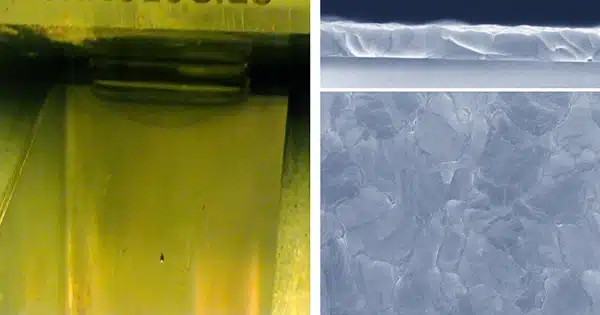For next-generation solar modules, metal halide perovskites are thought to be an especially affordable and promising family of materials. Utilizing coating techniques, liquid prints created from precursor materials and a variety of liquids can be used to create perovskite solar cells. After coating, the solvents evaporate and the perovskites crystallize to create a more or less uniform layer.
The Helmholtz-Zentrum Berlin team led by Prof. Dr. Eva Unger has a wealth of experience with solution-based processing techniques and is looking into expanding possibilities.
The finest solution-processable PV technology currently available is perovskite photovoltaics, but as Eva Unger points out, “we are just starting to understand how the complex interaction of the solvent components affects the quality of the perovskite layers.”

This is due to the possibility of undesirable inhomogeneities, such as so-called ribbing patterns, developing when the halide perovskite layers are coated on big areas.
Such impacts can be reduced by changing the viscosity of the ink, according to Jinzhao Li, who is working with Unger on his. He has looked into how various fluid mixtures impact the crystallization of the perovskite sheets at BESSY II.
Thus, on a laboratory scale, the finest p-i-n-FAPbI3 perovskite solar cells attain a verified efficacy of 22.3%. Along with coworkers from the HySPRINT innovation lab and PVcomB, Jinzhao Li also created mini solar panels with a working area of 12.6 cm2, achieving efficiencies of about 17%.
At PVcomB’s outdoor test site, Dr. Carolin Ulbrich’s team evaluated the improved solar cells for an entire year. During that time, the efficiency was nearly constant in the winter and spring and only decreased in the hotter summer months. In order to further increase the long-term durability of halide perovskite photovoltaics, Eva Unger says that evaluations of bigger modules in realistic settings provide useful information on the processes of deterioration.















